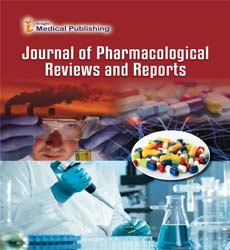Drug-Induced Pigmentation
Celeste Nelson*
Department of Pharmacology, Claude Bernard University, Lyon, France
- *Corresponding Author:
- Celeste Nelson
Department of Pharmacology
Claude Bernard University
Lyon, France
E-mail: Nelson@celeste.gmail.com
Received Date: December 2, 2021; Accepted Date: December 16, 2021; Published Date: December 23, 2021
Citation: Nelson C (2021) Drug-Induced Pigmentation. J Pharmacol Rev Rep Vol.4 No.3:010.
Description
A complete medical history is important to determine the cause of pigmentation disorders. Very important information gathered during the patient's examination is the timing of the medications taken and the progression of pigmentation, the presence of accentuation from exposure to sunlight, the list of medications taken, and a personal and family history of disorders such as alkaptonuria. Patients should be interviewed when the first symptoms appear. Drug-induced pigmentation is an acquired disease that gradually progresses over time as the patient continues to be exposed to the chemical.
A review of related symptoms and comorbidities should be initiated to rule out potential alternative causes. In addition, lichenoid or bullous rashes are often associated with druginduced dyschromia, so patients should report other recent skin changes that have occurred.
A thorough review of the patient's drug list is also essential and make sure that all herbs or over-the-counter drugs are included. All medications taken 6 months before hyperpigmentation deficiency should be documented. The history of side effects of a drug often provides supporting evidence for the etiology associated with the drug. Recent exposure to sunlight or artificial UV light is also important. Exposure to the sun can exacerbate drug-induced skin pigmentation. Finally, after the pathogen is discontinued, the change in the patient's pigment should disappear over time. Patients should be asked about previous resolution of symptoms after discontinuation of treatment. Adverse skin reactions to drugs are a common reason to consult a dermatologist. Drug-induced skin conditions can manifest themselves in a variety of ways. The drug can cause rash, urticaria, hypersensitivity syndrome, pustular rash, erythema multiforme, toxic epidermal necrolysis, skin necrolysis, and abnormal pigmentation of the skin and mucous membranes. Drug-related pigment changes usually result in limited morbidity, but these changes can be very confusing to patients. Drug-induced pigmentation disorders can be divided into three groups: (1) hyperpigmentation/ melanosis, (2) depigmentation/vitiligo, and (3) abnormal pigmentation or the appearance of abnormal skin colour increase.
Medical care
The most important factor in the treatment of drug-induced hyperpigmentation deficiency is to identify and discontinue the drug in question. Most mucosal skin pigmentation is reversible and resolves spontaneously while avoiding problematic drugs. In scenarios where multiple medications may be involved as causes of pigmentation disorders, it should be decided between the physician and the patient to discontinue all non-essential medications. In many cases, reducing the dose of life-saving treatment is sufficient to alleviate drug-induced dyschromia. In addition, a mere explanation of the benign nature of the skin reaction can relieve the patient's anxiety and give them time to determine the offending drug. In addition, exposure to sunlight and UV light can increase pigmentation, especially after sensitization with a photosensitizer. Using sunscreen and careful avoidance of sunlight will help to prevent pigment changes from progressing or recurring. Finally, topical depigmenting and laser treatments (e.g. Q-switched alexandrite laser, Q-switched ruby laser) have been reported to improve cases of permanent pigmentation deficiency. The use of these treatments is controversial as they show conflicting results further evaluation is needed.
Open Access Journals
- Aquaculture & Veterinary Science
- Chemistry & Chemical Sciences
- Clinical Sciences
- Engineering
- General Science
- Genetics & Molecular Biology
- Health Care & Nursing
- Immunology & Microbiology
- Materials Science
- Mathematics & Physics
- Medical Sciences
- Neurology & Psychiatry
- Oncology & Cancer Science
- Pharmaceutical Sciences
